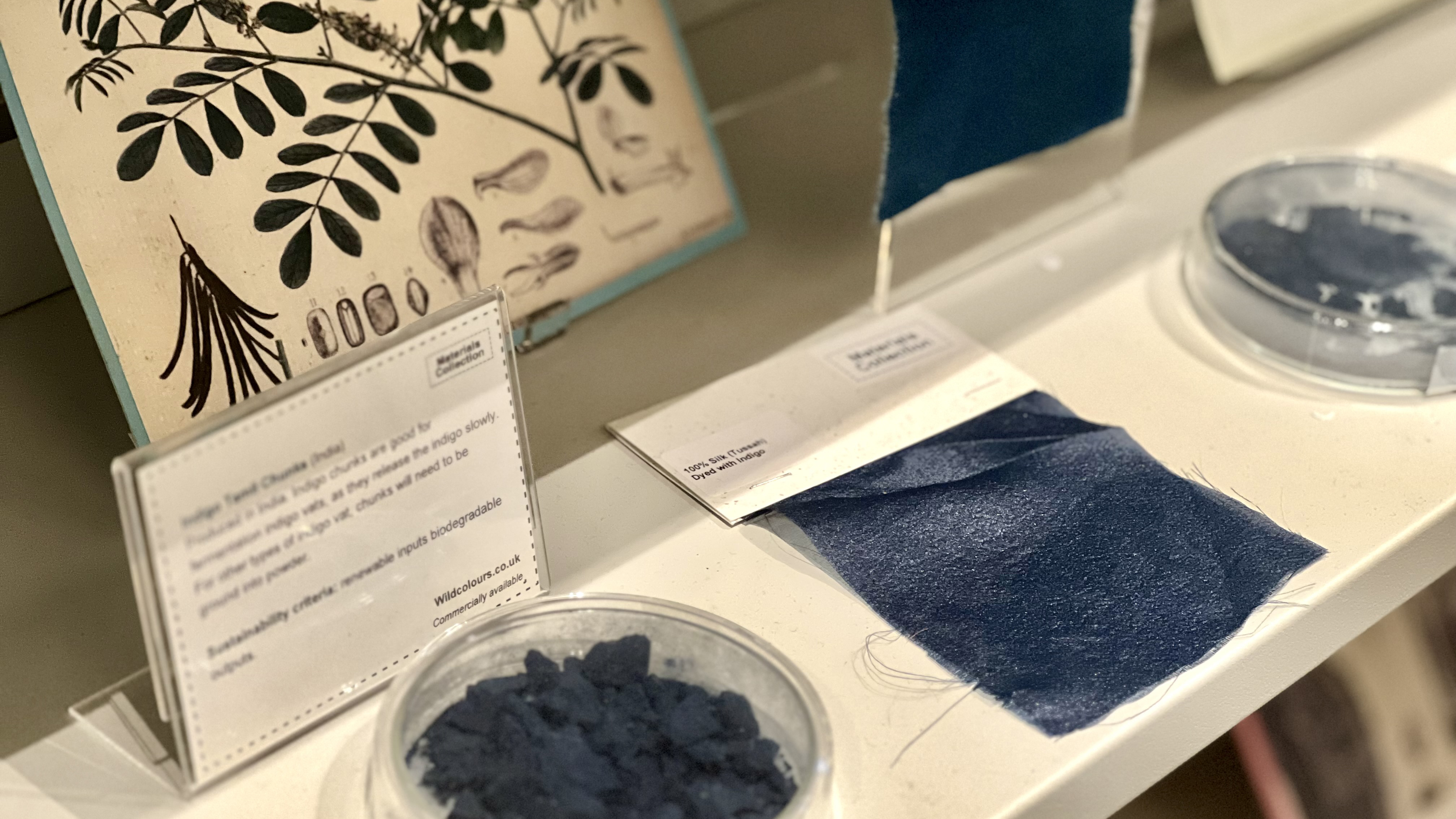LCF Materials Collection is hosting a new display on natural dyes. The exhibition, researched and curated by Laura L. Maceiro, is in the London College of Fashion Library. It will be on display until the end of the academic year 2025.
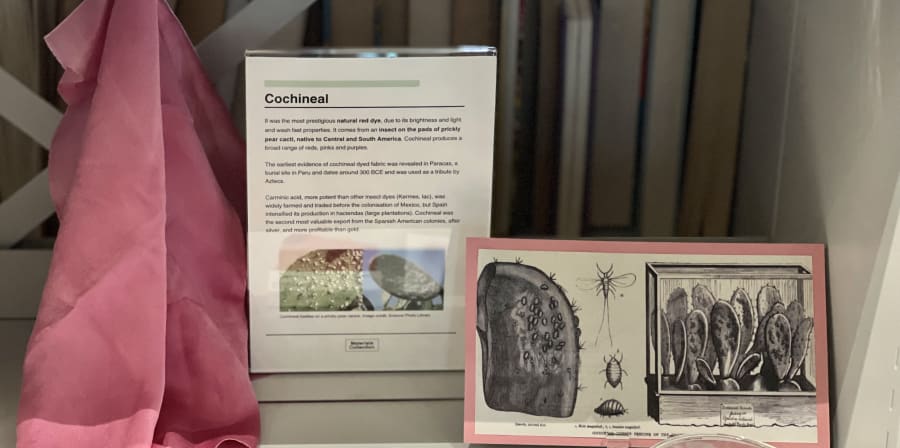
What are natural dyes?
Natural dyes come from plants, animals, minerals, fungi or lichen. Whereas synthetic dyes come from coal tar or petroleum by-products.
Until mid-19th century, natural dyes were the only source of colouration. It wasn’t until 1856, that mauveine, the first synthetic dye was invented. Today, however, 99% of global textiles are synthetically dyed (Saxena, S. and Raja, A.S.M., 2014)
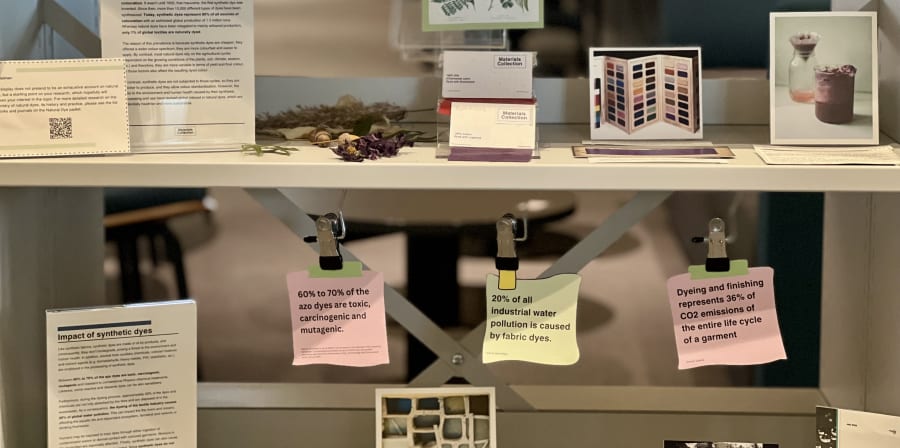
Demand for sustainable colour
Dyeing in the textile industry causes 20% of global water pollution (World Bank). Between 60-70% of AZO dyes are toxic, carcinogenic and mutagenic (Al-Tohamy, R., et. Al., 2022).
Consequently, over the last years, there has been a renewed interest in natural dyes in the fashion sector. UAL students are deeply concerned about sustainability.
In this context, the display aims to underline the potential of natural dyes as a source of sustainable colouration. It acknowledges that growing interest and serves as a starting point for the students' research and practice.
The exhibition emphasizes the material link between colour, fashion and nature. It encourages us to think how colour is made. This includes its provenance and impact on communities and the environment. So, the exhibition seeks to foster critical thinking about colour. Students can then pose questions: is this colour biodegradable or toxic? How is it produced? Can colour be circular?
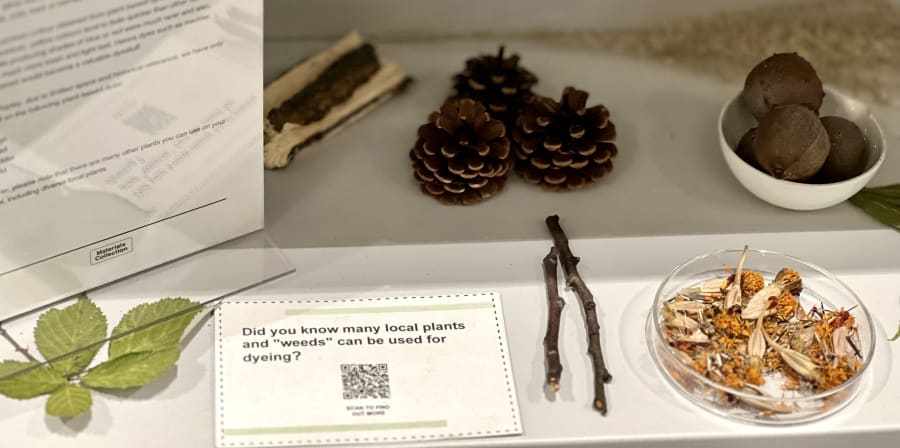
The display shows dye innovations and the work of diverse colour makers. Equally, creative displays feature data from academic research and reports. They also share diverse materials such as plants, pigments or food and garden waste.
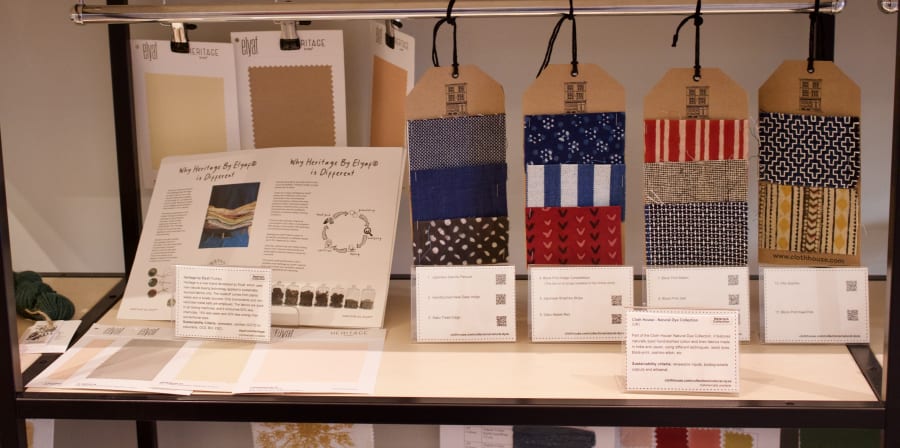
What will you find?
The display explores the effects of synthetic dyes on the environment and human health. It tracks the history of natural dyes and how this ancient craft was practiced across different cultures. It also notes how some dyes became valuable commodities traded by colonial countries.
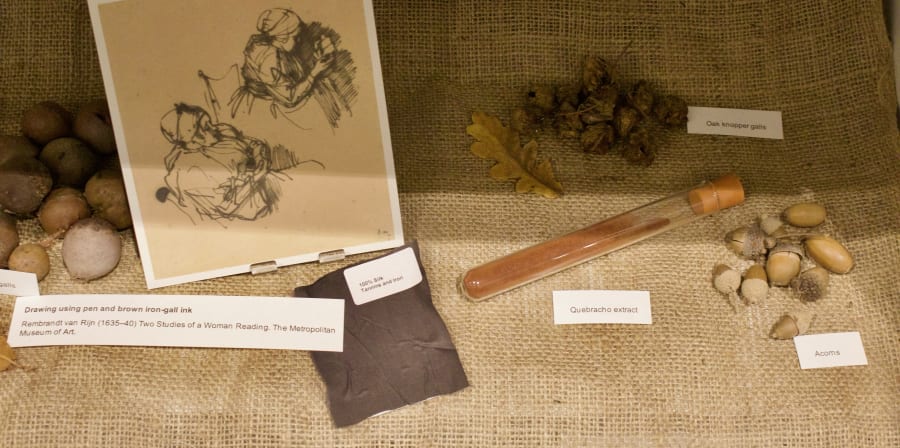
It features some of the most common mordants (dye fixatives) and bio-mordants. You’ll see some famous plant and animal-based dyes such as indigo, madder or cochineal. But you can discover some less well known ones, such as mushrooms and lichen dyes.
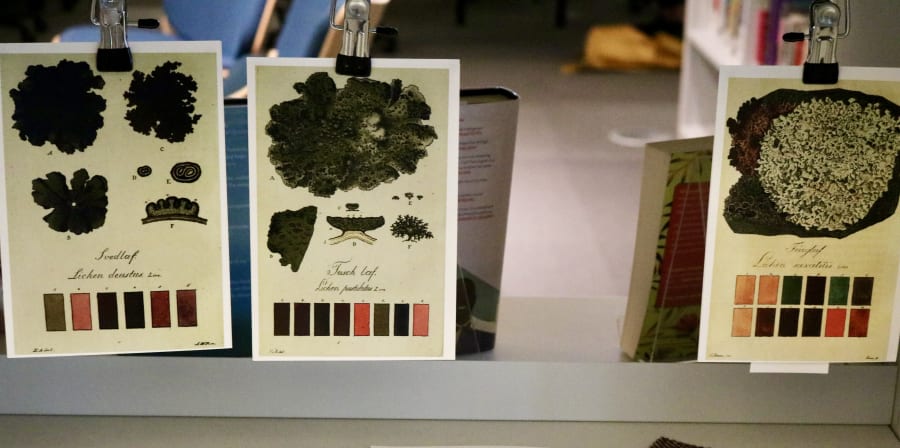
Finally, the challenges in implementing natural dyes at large scale are also addressed. The development of new innovations and technology are beginning to overcome these, along with the adoption of circular practices. Colour can be obtained from food, agriculture, garden and forestry waste streams.
Regenerative agriculture principles in the cultivation on dye plants are another potential solution. Therefore, the display showcases samples of some innovative dye manufacturers as well as the work of independent textile studios and alumni.
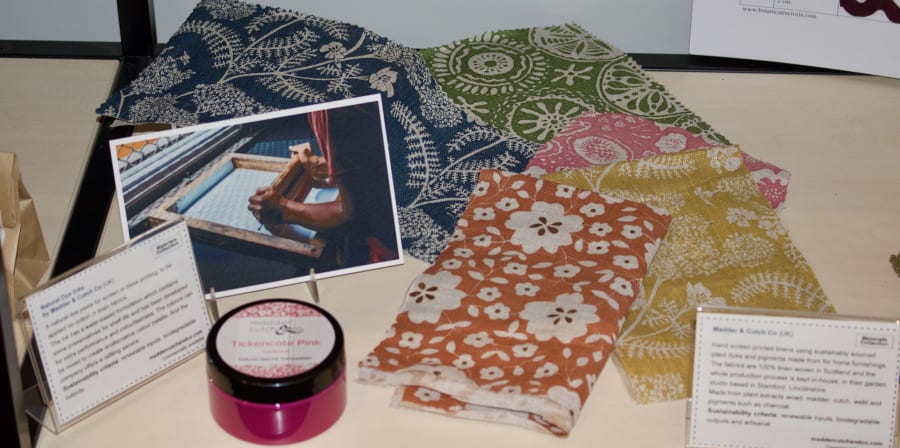
Manufacturers and colour makers on display
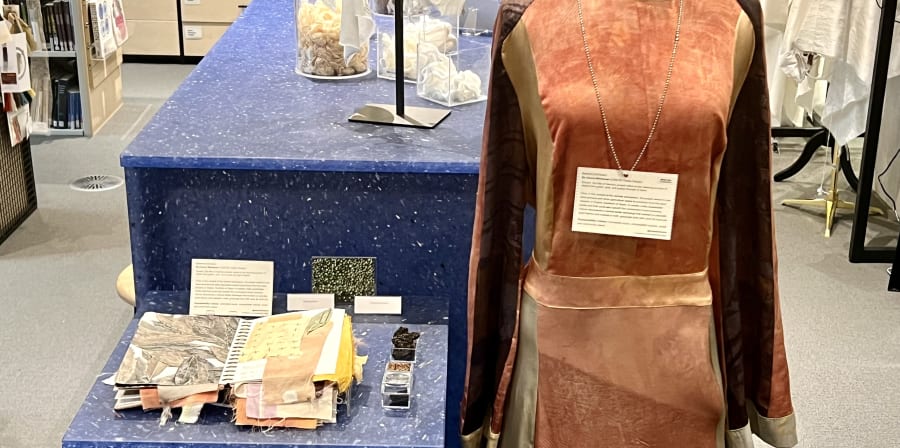
How to visit
To visit the display, please see LCF Library Opening hours. The LCF library is located on the second floor of the Stratford, Eastbank campus.
Find out more
Any questions regarding the display or the Materials Collection, please email materials@fashion.arts.ac.uk
References
Al-Tohamy, R., et. al. (2022) ‘A critical review on the treatment of dye-containing wastewater: Ecotoxicological and health concerns of textile dyes and possible remediation approaches for environmental safety,’ Ecotoxicology and Environmental Safety, 231, p.113160.
Saxena, S. and Raja, A.S.M. (2014) ‘Natural dyes: sources, chemistry, application and sustainability issues,’ in Roadmap to sustainable textiles and clothing: eco-friendly raw materials, technologies, and processing methods (pp. 37-80). Singapore: Springer Singapore.
World Bank (2014) ‘The Bangladesh Responsible Sourcing Initiative: A New Model for Green Growth?’
